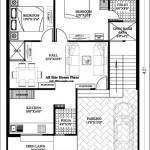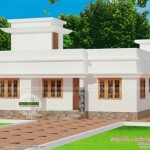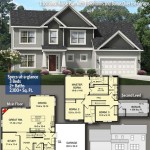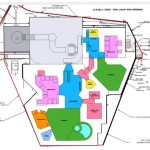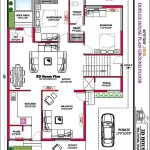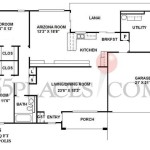House Plans That Can Be Built In Phases
The dream of homeownership is a significant aspiration for many. However, the financial realities of constructing a home can often be daunting. Opting for house plans that can be built in phases presents a viable solution, allowing individuals to realize their architectural vision gradually and within manageable financial constraints. This approach involves constructing a home in stages, prioritizing essential areas and adding subsequent sections as resources become available.
The concept of phased construction offers flexibility and control over the building process. Instead of undertaking a large, all-encompassing project, homeowners can break down the construction into smaller, more digestible segments. This allows for better budget management, adjustments based on changing needs, and the opportunity to live in a partially completed home while continuing with construction on later phases. Selecting the right house plan is crucial for the success of this strategy. It needs to be designed with future expansion in mind, ensuring structural integrity and aesthetic coherence as the building progresses.
Key Considerations When Choosing a Phased Construction House Plan
Selecting a suitable house plan for phased construction requires careful consideration of several factors. These considerations directly impact the feasibility, cost-effectiveness, and overall success of the project. Prioritizing needs, understanding structural implications, and ensuring future adaptability are critical aspects of this selection process.
First, it is essential to identify the homeowner's current needs and future aspirations. The initial phase should encompass the most essential living areas, such as the kitchen, a bathroom, a bedroom, and a living room. The plan should clearly delineate which areas will be constructed in each phase, ensuring that the initial phase provides a functional and comfortable living space independent of subsequent additions. This often involves planning for utilities, such as plumbing and electrical systems, to be fully operational in the initial phase and easily expandable in later phases.
Second, the house plan must address structural integrity throughout the construction process. The initial phase needs to be structurally sound and capable of withstanding the elements on its own, even before the addition of subsequent phases. This often requires consultation with a structural engineer to ensure that the foundation, walls, and roof are designed to support future expansion without compromising the integrity of the existing structure. The plan should also consider the impact of construction activities on occupied areas during later phases, minimizing disruption and ensuring safety.
Third, ensuring future adaptability is essential. The house plan should allow for modifications and adjustments as needed, considering potential changes in lifestyle, family size, or financial circumstances. This may involve incorporating flexible spaces that can be used for various purposes or designing the layout in a way that allows for easy expansion without requiring major structural alterations. The plan should also consider the aesthetics of the completed home, ensuring that each phase integrates seamlessly with the existing structure to create a cohesive and visually appealing final product.
Advantages of Phased Construction
Opting for phased construction offers numerous advantages, making it an attractive option for many aspiring homeowners. These advantages range from improved budget management and reduced financial strain to increased flexibility and the ability to customize the home to evolving needs.
One significant advantage is improved budget management. Phased construction allows homeowners to spread out the cost of building a home over a longer period, making it more affordable and manageable. Instead of incurring a large upfront expense, the construction cost is divided into smaller, more digestible increments, allowing homeowners to save and finance each phase independently. This approach can significantly reduce the financial strain associated with homeownership and minimize the risk of taking on excessive debt. Detailed financial planning is still required, establishing a realistic timeline and a budget for each phase.
Another advantage is increased flexibility. Phased construction allows homeowners to make adjustments to the plan as needed, based on changing needs or circumstances. For example, if the family size increases, they can accelerate the construction of additional bedrooms. If financial resources become limited, they can postpone non-essential phases. This flexibility is particularly valuable in an unpredictable environment, where unforeseen events can impact financial stability and lifestyle changes. Flexibility can also extend to design choices, allowing for modifications to interior finishes or exterior features as tastes evolve over time.
Furthermore, phased construction allows for greater customization. By building in phases, homeowners have the opportunity to live in the partially completed home and experience how the space functions in real life. This allows them to identify areas that need improvement or modification before completing the entire project. They can then make adjustments to the plan based on their personal preferences and lifestyle needs, ensuring that the final product is a truly customized and functional home. This level of customization is difficult to achieve with traditional construction methods, where the entire home is built according to a predetermined plan.
Potential Challenges and Mitigation Strategies
While phased construction offers numerous benefits, it also presents certain challenges that need to be addressed proactively. These challenges can include increased construction time, potential cost overruns, and the need for meticulous planning and coordination. Understanding these challenges and implementing appropriate mitigation strategies is crucial for the successful completion of a phased construction project.
One challenge is the potential for increased construction time. Building a home in phases naturally takes longer than constructing it all at once. This extended timeline can be frustrating for homeowners who are eager to move into their completed home. To mitigate this challenge, it is essential to develop a realistic timeline for each phase of construction and to work with contractors who are experienced in phased construction projects. Regular communication and coordination between the homeowner, the architect, and the contractor are also crucial to ensure that the project stays on track.
Another challenge is the potential for cost overruns. Phased construction can sometimes be more expensive than traditional construction due to economies of scale. For example, contractors may charge more for smaller projects or for returning to the site multiple times to complete different phases. To mitigate this challenge, it is essential to obtain detailed cost estimates for each phase of construction and to factor in a contingency fund to cover unexpected expenses. Careful material selection and value engineering can also help to control costs. Furthermore, locking in prices with suppliers for future phases, if possible, can protect against inflation.
Careful planning and coordination is also crucial. Phased construction requires meticulous planning and coordination to ensure that each phase integrates seamlessly with the existing structure and that the final product is a cohesive and functional home. This includes careful consideration of structural integrity, utility connections, and aesthetic design. It also requires clear communication and coordination between the homeowner, the architect, the contractor, and any other relevant stakeholders. The architect plays a vital role in ensuring that the plans are well-documented and that all parties are aligned on the project goals and objectives. Detailed documentation, including blueprints, specifications, and contracts, is essential to avoid misunderstandings and disputes.
Ultimately, house plans that can be built in phases offer a practical pathway to homeownership for many individuals. By carefully considering the key points discussed, homeowners can effectively manage their budgets, customize their homes to their evolving needs, and realize their architectural dreams in a step-by-step manner. The keys to success lie in diligent planning, informed decision-making, and close collaboration with qualified professionals throughout the entire construction process.

32 Build In Stages Ideas Budget House Plans

Small Build In Stages House Plan Bs 1275 1595 Ad Sq Ft Expandable To Square Feet

Small Build In Stages House Plan Bs 1275 1595 Ad Sq Ft Expandable To Square Feet

Hugedomains Com House Plans Building A With Pictures

Build In Stages Small House Plan Bs 1084 1660 Ad Sq Ft Expandable To Sf Plans Craftsman Style

How To Build A House In Phases Daily Monitor Building Three Bedroom Plan Plans

How To Build A Three Bedroom House In Two Phases

Build In Stages Small House Plan Bs 1084 1660 Ad Sq Ft Expandable To Sf

Build In Stages 2 Story House Plan Bs 1613 2621 Ad Sq Ft Expandable To Sf

5 Stages Of Remodeling The House Designers

